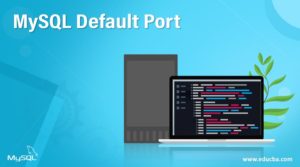

The ordering will always be alphabetical. sql.gz files in the container’s /docker-entrypoint-initdb.d directory.Īny files found will be executed sequentially. Under the Local Address column, you can see that MySQL is running on port 3306. The MySQL images are configured to look for. You’ll often have tables and data you want to seed into the database as soon as it’s created.
#CHECK MYSQL PORT PASSWORD#
Because of this, you should take care when using this variable in CI environments – the password may be visible to anyone who has access to the job logs! The generated password will be emitted to the standard output stream on first run. The port is usually needed when connecting to. This replaces the MYSQL_ROOT_PASSWORD variable. We use 3306 MySQL port on our Shared, Cloud, and WordPress hosting packages, which is the default MySQL port. We’ll also tell you how you can remotely connect to a MySQL database in the next section. At Kinsta, you can run this query using phpMyAdmin, which you can access from the Kinsta dashboard.


#CHECK MYSQL PORT FULL#
This provides the full MySQL command-line interface, so you can use all the familiar commands and flags. You can gain an interactive MySQL shell by attaching to the container and running the mysql command.
#CHECK MYSQL PORT HOW TO#
RELATED: How to Install Docker and Docker Compose on Linux Connecting to MySQL You can start MySQL using MYSQL_ROOT_PASSWORD=secure docker-compose up -d. Writing a docker-compose.yml file is more maintainable. The docker run command can quickly become lengthy, especially if you have complex configuration requirements. RELATED: How to Use Docker to Containerize PHP and Apache Docker Compose Check for a line that contains ready for connections. You can check if the database is up by running docker logs my-mysql. The MySQL first-run routine will take a few seconds to complete. Here’s how to run MySQL while satisfying these prerequisites: docker run -name my-mysql -e MYSQL_ROOT_PASSWORD=secret -v $HOME/mysql-data:/var/lib/mysql -d mysql:8.0


 0 kommentar(er)
0 kommentar(er)
